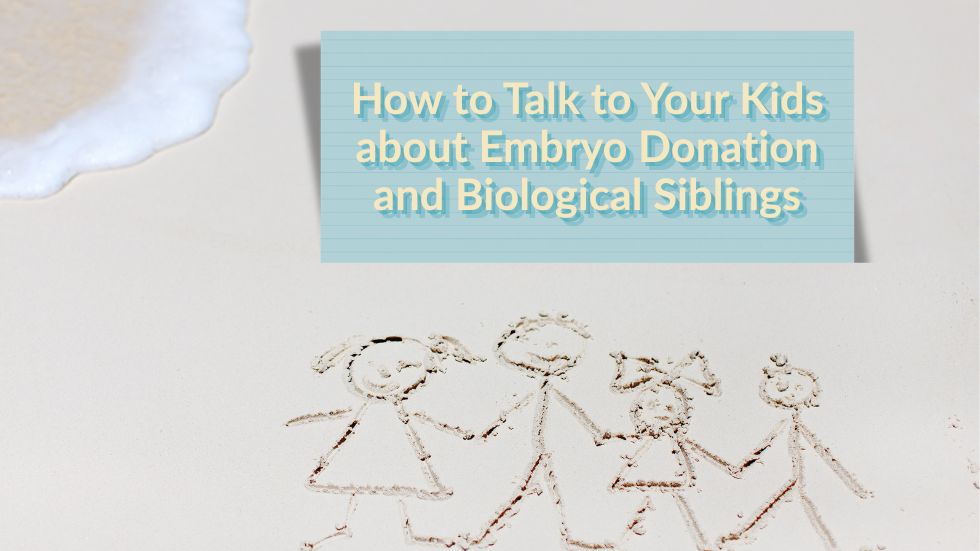There is no shortage of advice out there for adoptive families on how to share their child’s story of origin—but what about embryo donor families? How do you explain to your children that they may have biological siblings growing up in other families, perhaps in another part of the world?
Many families who donate their remaining embryos already have biological children, often from that same group of embryos. So, how do you break down something as complex as embryo donation and adoption—something that even many adults have a hard time wrapping their heads around—for a young child?
Here are some tips for sharing this unique part of your family’s story with your children, and helping them process the questions that may arise.
1. Start with Their Story
Before a child can understand another person’s story, they need a firm grasp of their own. A strong sense of self is something that develops over time, but it is essential for making sense of complex ideas about others.
Dr. Kathleen Whitten, a developmental psychologist at Georgia State University, puts it this way: “Young children…are most interested in themselves, their own families, and their own story, not in an abstract idea about what adoption is.”
Start by helping your child understand that they, too, were once an embryo. Whether they were conceived naturally or through IVF, all babies start the same way. Framing this part of the story around their own beginnings introduces the concept of embryos in a personal, relatable way—and it lays the groundwork for explaining that some of those embryos were later donated to another family.
2. Use Honest, Clear Language
It can be tempting to soften or simplify your words when talking to young kids—maybe even invent a whimsical story about a busy stork visiting more than one family. However, it is important to use real, truthful language, even if you simplify it for their age level.
Talk openly about concepts like eggs, sperm, embryos, and pregnancy. You do not need to dive into every detail all at once, but choosing honest and clear language from the start allows you to build on the conversation as your child matures and their understanding deepens.
3. Let Them Be Involved
Being told a big, meaningful family story without having any say in it can feel disempowering to a child. You can help your kids feel more connected and involved by including them in age-appropriate ways.
If you have recently matched with an adoptive family, consider sharing their profile or telling your child a bit about them. If you are in contact with the family, you might share photos or updates—and invite your child to send a message or select pictures to share in return. Even if you are not in direct contact, your child might enjoy creating something to save for a potential future connection, like a letter or photo album for their biological sibling.
And keep the conversation going!
Talking to your children about embryo donation might feel awkward or overwhelming at first—but like any big topic, it becomes more natural over time. The key is to revisit the conversation regularly, so it becomes a familiar part of your family’s story. The more your child hears it, the more comfortable and confident they will become in understanding and embracing it.
For more support and resources on how to talk with your children about embryo donation, visit EmbryoAdoption.org.


Recent Comments